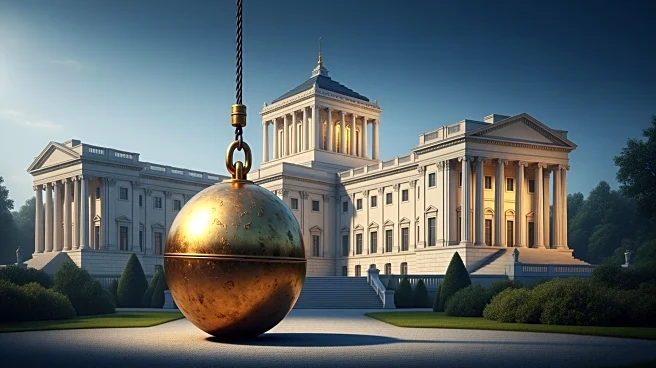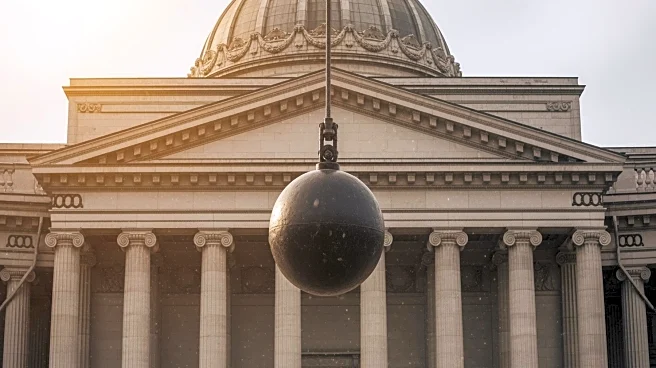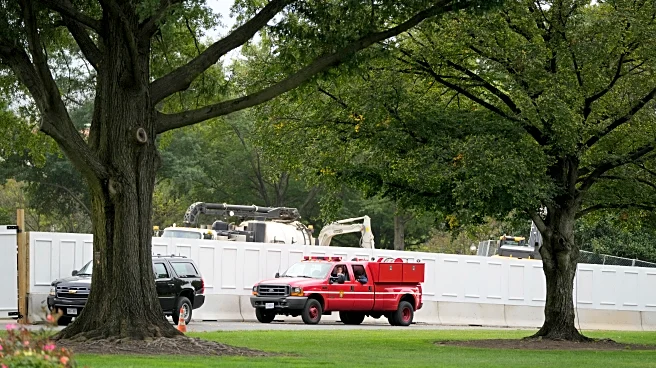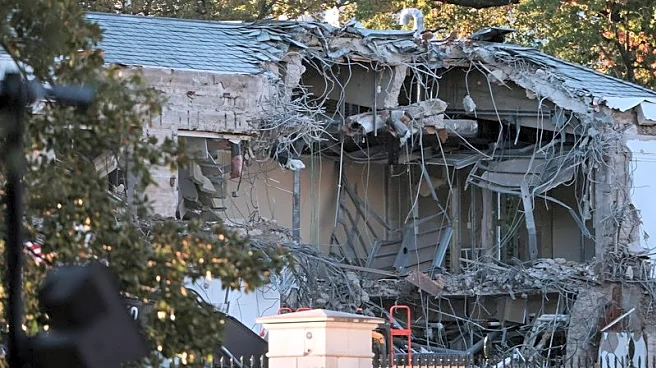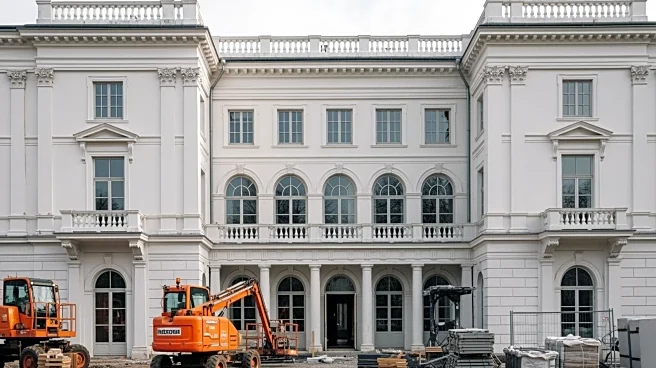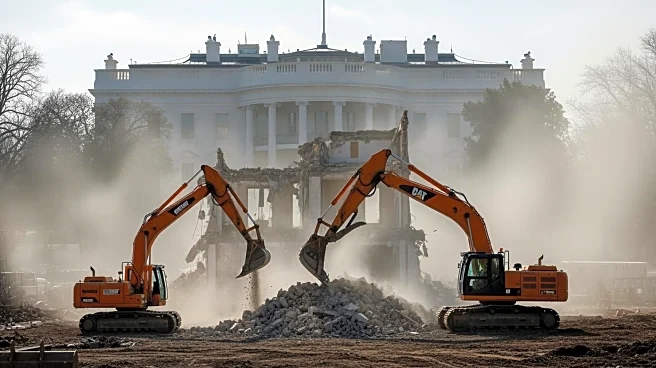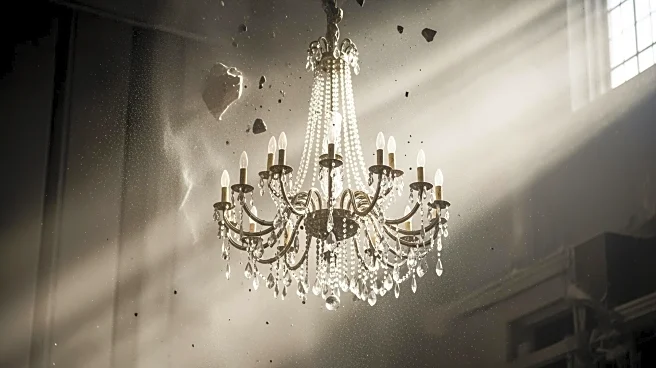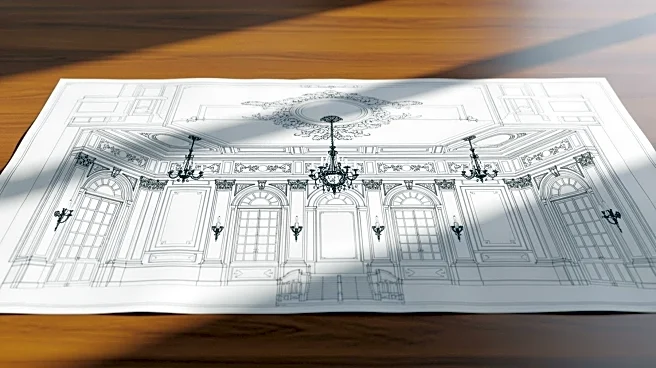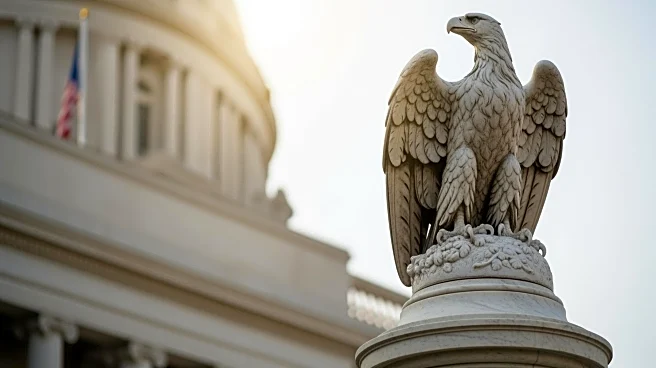What's Happening?
President Donald Trump has directed the demolition of part of the White House's East Wing to construct a new ballroom, despite lacking approval from the National Capital Planning Commission. The demolition began
on Monday, with construction equipment visibly tearing into the East Wing's facade. The ballroom project, championed by Trump, is intended to enhance the White House's facilities, although it has not yet received the necessary sign-off from the federal agency responsible for overseeing construction on government buildings in Washington, D.C. Will Scharf, the White House staff secretary, stated that the agency does not have jurisdiction over demolition work on federal property, only construction.
Why It's Important?
The decision to proceed with the demolition without federal approval raises questions about the oversight and governance of construction projects on federal property. This move could set a precedent for future administrations regarding the modification of historic government buildings. The construction of the ballroom, estimated to cost $250 million, reflects President Trump's vision for the White House but also highlights potential conflicts between executive ambitions and regulatory frameworks. The lack of approval may lead to legal challenges or public scrutiny, impacting the administration's relationship with federal agencies and historical preservation groups.
What's Next?
The next steps involve potential legal challenges or negotiations with the National Capital Planning Commission to secure the necessary approvals for the construction phase. Stakeholders, including historical preservationists and federal agencies, may react to the demolition, influencing public opinion and policy decisions. The administration may need to address concerns about the impact on the White House's historical integrity and the precedent set by bypassing regulatory approval.
Beyond the Headlines
The demolition and construction project could have long-term implications for the preservation of historical sites and the balance of power between the executive branch and regulatory agencies. Ethical considerations regarding the alteration of iconic government buildings may arise, prompting discussions on the preservation of national heritage versus modernization needs.
